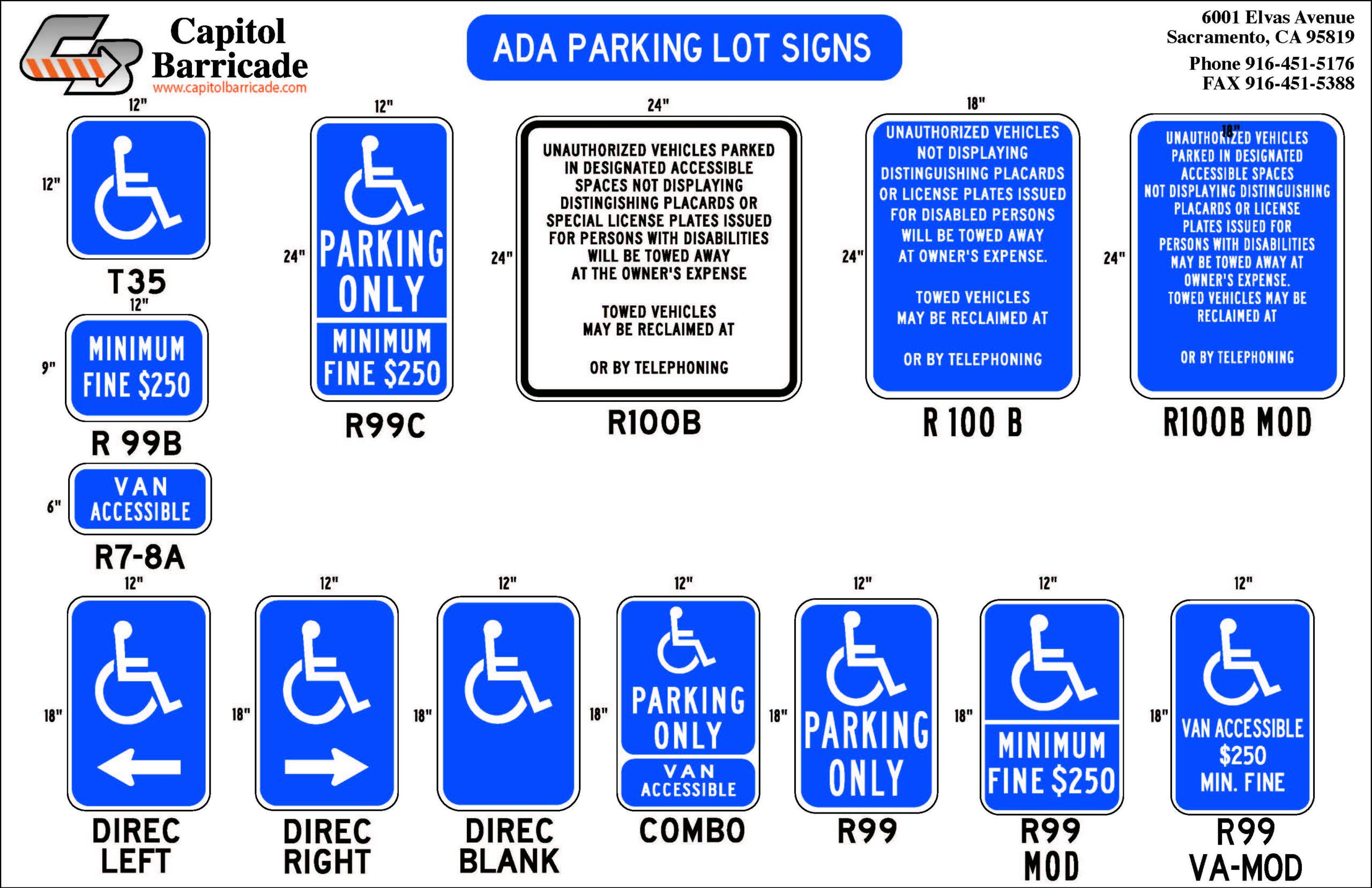Discovering Innovative Layouts for Effective ADA Signs
Discovering Innovative Layouts for Effective ADA Signs
Blog Article
Checking Out the Secret Functions of ADA Indications for Improved Ease Of Access
In the realm of ease of access, ADA signs function as quiet yet effective allies, making sure that areas are navigable and inclusive for individuals with disabilities. By incorporating Braille and responsive aspects, these signs damage barriers for the visually damaged, while high-contrast color design and legible typefaces accommodate varied visual demands. Their strategic placement is not approximate yet instead a calculated initiative to promote smooth navigation. Yet, beyond these functions lies a deeper story about the development of inclusivity and the continuous dedication to creating fair areas. What much more could these signs symbolize in our pursuit of universal access?
Relevance of ADA Compliance
Guaranteeing conformity with the Americans with Disabilities Act (ADA) is crucial for promoting inclusivity and equivalent access in public rooms and offices. The ADA, enacted in 1990, mandates that all public centers, companies, and transport solutions fit people with disabilities, ensuring they enjoy the same legal rights and opportunities as others. Conformity with ADA criteria not just fulfills legal obligations however also enhances an organization's credibility by showing its commitment to variety and inclusivity.
One of the essential facets of ADA compliance is the execution of obtainable signs. ADA signs are created to ensure that individuals with impairments can quickly browse through buildings and rooms. These signs need to adhere to details guidelines regarding size, font style, color contrast, and placement to guarantee presence and readability for all. Correctly carried out ADA signs aids remove barriers that people with disabilities frequently run into, thus advertising their freedom and confidence (ADA Signs).
Furthermore, adhering to ADA laws can reduce the risk of potential fines and legal consequences. Organizations that stop working to abide by ADA standards may deal with claims or charges, which can be both monetarily troublesome and destructive to their public photo. Thus, ADA compliance is important to cultivating an equitable atmosphere for everyone.
Braille and Tactile Aspects
The incorporation of Braille and tactile components into ADA signage symbolizes the principles of ease of access and inclusivity. These attributes are critical for people who are aesthetically damaged or blind, allowing them to navigate public rooms with better independence and confidence. Braille, a responsive writing system, is important in giving written details in a style that can be conveniently perceived through touch. It is commonly positioned underneath the equivalent text on signs to guarantee that individuals can access the info without aesthetic assistance.
Responsive elements prolong beyond Braille and include elevated characters and icons. These parts are designed to be noticeable by touch, enabling individuals to recognize area numbers, restrooms, exits, and other crucial locations. The ADA establishes particular standards regarding the size, spacing, and placement of these tactile components to maximize readability and ensure uniformity across different environments.

High-Contrast Color Pattern
High-contrast color design play a pivotal duty in improving the visibility and readability of ADA signs for individuals with aesthetic disabilities. These systems are important as they make best use of the distinction in light reflectance between text and history, making sure that signs are easily noticeable, also from a distance. The Americans with Disabilities Act (ADA) mandates making use of particular shade contrasts to fit those with minimal vision, making it a vital aspect of compliance.
The efficiency of high-contrast colors depends on their ability to attract attention in various lights conditions, consisting of dimly lit atmospheres and locations with glare. Normally, dark text on a light history or light message on a dark background is employed to accomplish optimum contrast. Black message on a yellow or white background offers a plain visual distinction that helps in quick recognition and understanding.

Legible Fonts and Text Size
When considering the layout of ADA signs, the option of readable font styles and appropriate text dimension can not be overstated. The Americans with Disabilities Act (ADA) mandates that fonts must be not italic and sans-serif, oblique, manuscript, extremely decorative, or of unusual kind.
According to ADA standards, the minimum message height must be 5/8 inch, and it ought to raise proportionally with seeing range. Consistency in message size adds to a cohesive visual experience, assisting individuals in browsing environments successfully.
Additionally, spacing in between letters and lines is indispensable to clarity. Ample spacing stops personalities from appearing crowded, boosting readability. By adhering to these requirements, developers can dramatically site link improve access, guaranteeing that signs offers its intended function for all people, regardless of their visual capacities.
Effective Positioning Approaches
Strategic positioning of ADA signs is necessary for optimizing ease of access and ensuring compliance with lawful requirements. ADA guidelines state that indications ought to be mounted at an elevation between 48 to 60 inches from the ground to guarantee they are within the click over here line of sight for both standing and seated people.
Furthermore, signs should be placed nearby to the latch side of doors to enable easy identification before entrance. Uniformity in sign positioning throughout a facility improves predictability, decreasing complication and enhancing total customer experience.

Conclusion
ADA indicators play a crucial duty in promoting accessibility by integrating features that resolve the needs of people with disabilities. These aspects jointly promote a comprehensive environment, underscoring the value of ADA conformity in ensuring equal access for all.
In the realm of accessibility, ADA signs offer as quiet yet effective allies, ensuring that spaces are navigable and inclusive for individuals with handicaps. The ADA, established in 1990, mandates that all public centers, employers, and transport solutions accommodate people with impairments, guaranteeing they enjoy the exact same legal rights and opportunities as others. ADA Signs. ADA signs are created to make certain that people with disabilities can easily navigate with structures and spaces. ADA standards stipulate that signs must be installed at an elevation between 48 to 60 inches from the ground to guarantee they are within the line of sight for both standing and seated people.ADA signs play a crucial function in promoting accessibility by integrating features that resolve the needs of individuals with impairments
Report this page